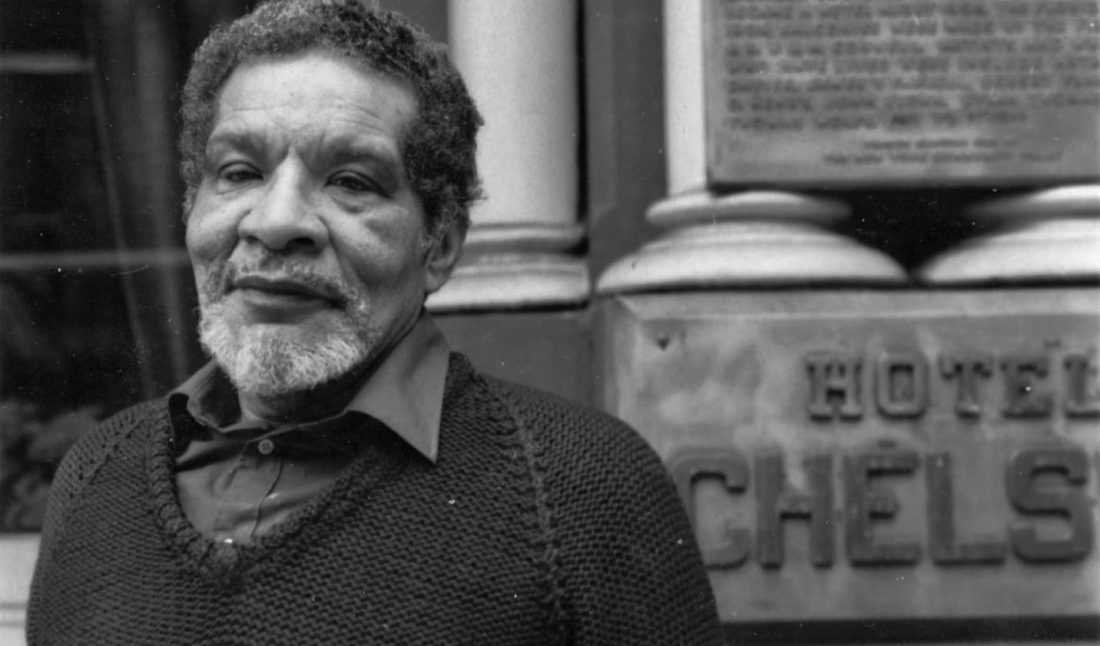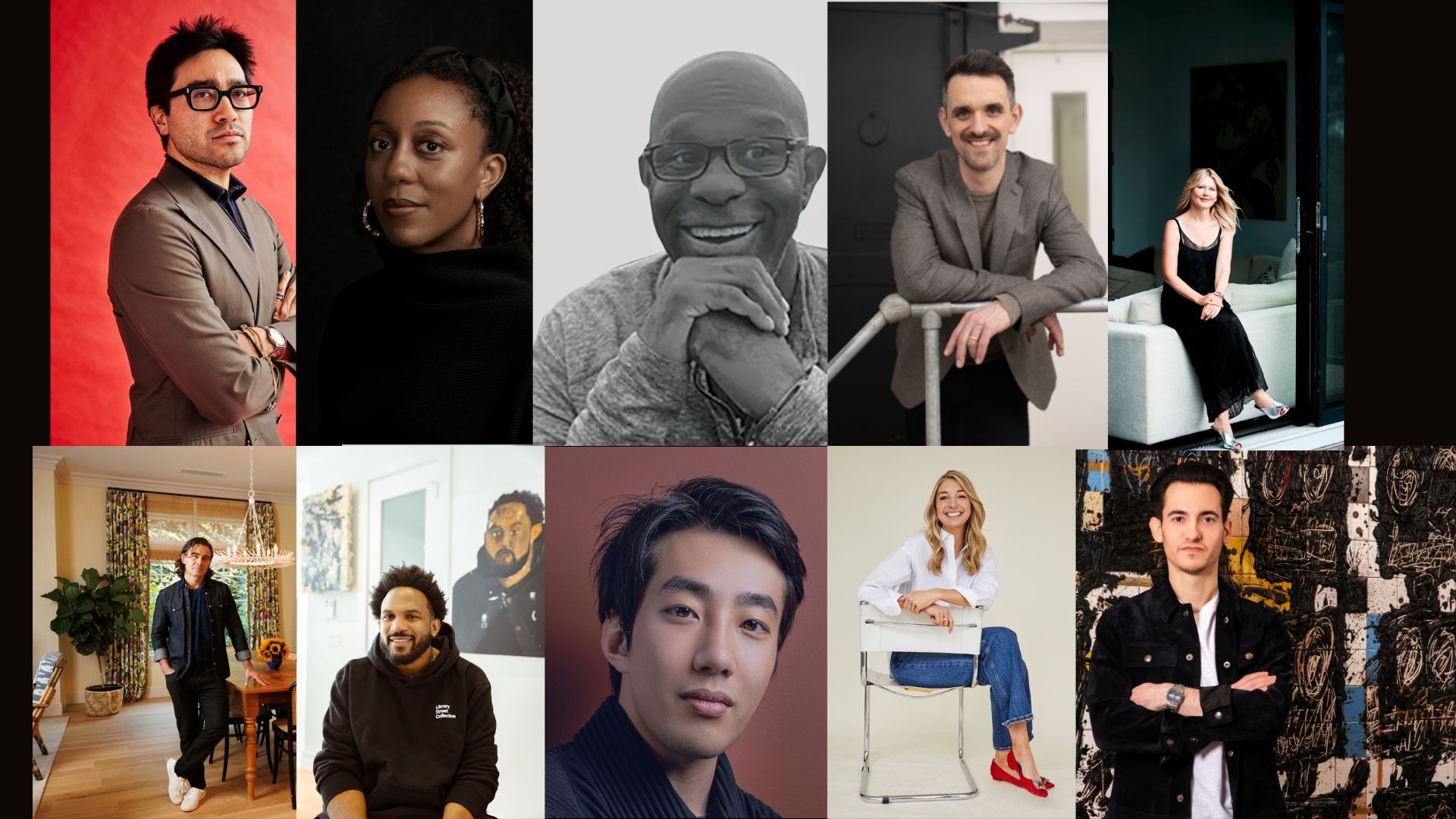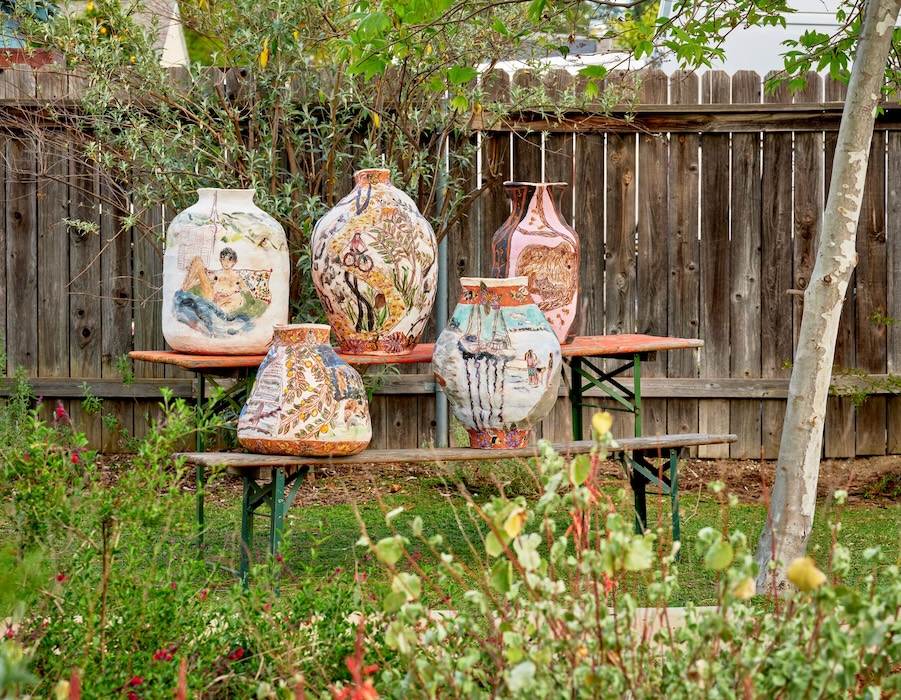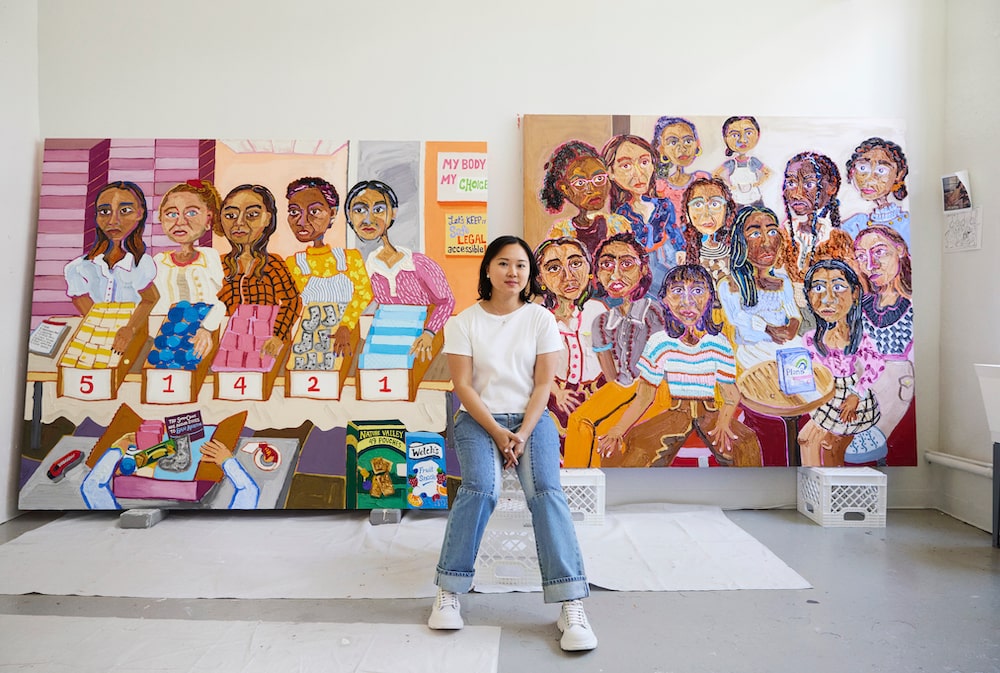This week, at the inaugural Independent 20th Century in New York, Ryan Lee Gallery is showing “Herbert Gentry at the Chelsea Hotel.” On view at the fair, open now through September 11, are works made by the artist during the time he lived and worked at the famous New York location.
Gentry’s expressive, figurative paintings are full of life, emotion, joy, color, and gesture. He was a figure in the post-war European art community, going to Paris on the GI Bill in 1946, and spending time there and in Scandinavia for the next few decades. Between 1971 and the late 1990s, he kept a residence and studio at the Chelsea Hotel, finding fulfillment and enjoyment in the downtown bohemian scene of the New York icon. He passed away in 2003 in Sweden at the age of 84.
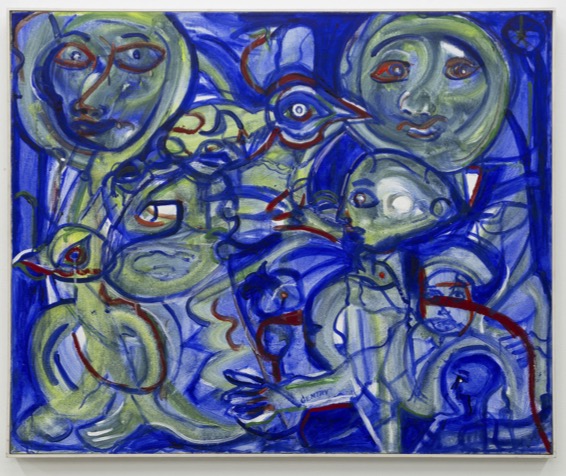 Herbert Gentry, “Blue Garden,” 1987, oil on linen, 36 3/4 x 45 inches, courtesy of Ryan Lee Gallery.
Herbert Gentry, “Blue Garden,” 1987, oil on linen, 36 3/4 x 45 inches, courtesy of Ryan Lee Gallery.
Ryan Lee Presents Herbet Gentry at Indpeendent
He was affiliated with the Cobra movement and counted artists like Ed Clark and Romare Bearden as close friends. Gentry’s work has often been shown in the context of his relationship and time spent in Europe. With the reopening of the Chelsea Hotel, Ryan Lee Gallery saw Independent 20th Century as the perfect chance to showcase the paintings and works on paper Gentry made while in New York. Whitewall spoke with the co-founder of Ryan Lee Gallery, Jeffrey Lee, about Gentry, his legacy, and some of the works at Independent that have never been seen before.
WHITEWALL: What made you want to bring the work of Herbert Gentry to the fair?
JEFFREY LEE: We thought Herbert Gentry would be a great presentation because he lived in the Chelsea Hotel for a long time, after spending his time between Europe and America. He has such an interesting artistic style and biography of being this bridge between the two continents. We also thought that with the reopening of the Chelsea Hotel and its incredible history with artists, it would be such a nice tie-in for New York. So, we’re focusing on works that he predominantly made at the hotel where he had a studio and apartment.
His work really speaks to universality, as exposed to specificity. All the images and the figures he made were about trying to capture the universal. He as a person was this incredible connector of people. He was someone that guided a lot of the American artists that went over to Paris. In 1946, he was one of the first artists to go over on the GI Bill. He was inspirational to people like Beauford Delaney, Larry Potter, Ed Clark, and Romare Bearden, who were all lifelong friends afterward. The spirit of his work is interconnected with surrealism, stream of consciousness, and figures all entangled together—it really represents his life. And there’s an incredible joy to them.
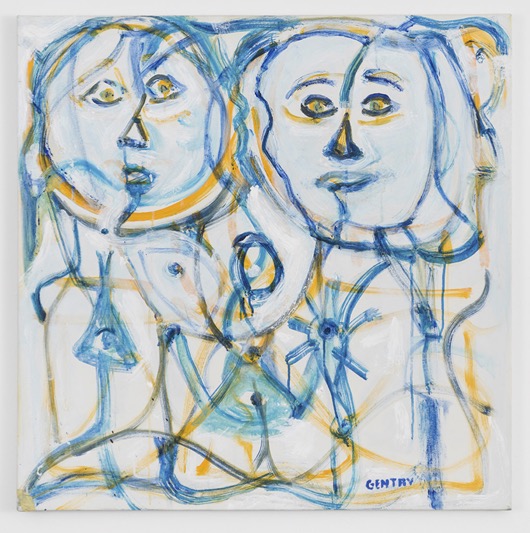 Herbert Gentry, “Two Together,” 1999, acrylic on canvas, 36 x 36 inches, courtesy of Ryan Lee Gallery.
Herbert Gentry, “Two Together,” 1999, acrylic on canvas, 36 x 36 inches, courtesy of Ryan Lee Gallery.
WW: What was the period of time when Gentry was living and working at the Chelsea Hotel?
JL: He first came to the Chelsea hotel in 1972. He always kept a studio in Paris, and since 1972 he always had a place in the Chelsea Hotel.
It was a focal point for downtown artistic activity and a bohemian gathering place with incredible artists. It’s something he really enjoyed and celebrated.
WW: What kind of work is on view at Independent?
JL: We’re showing mostly paintings and a couple of works on paper. Some of the paintings are going to be exhibited for the first time, and a couple have been in major museum shows, like at The Studio Museum, P.S.1, etc.
They are very subconscious and spontaneous and you can certainly see this incredible affinity to jazz, the idea of improvising, and the spontaneity he enjoyed with his work. He never really wanted to overthink things, it was about expressing what he was both feeling and thinking through these paintings.
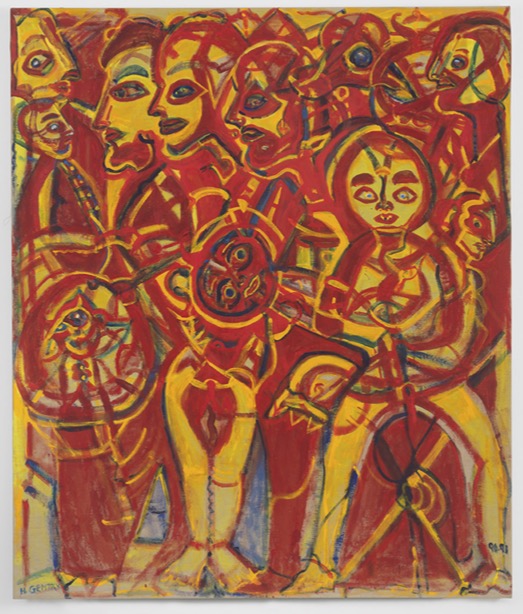 Herbert Gentry, “Amid the Crowd, “1990-1991, acrylic on unprimed linen, 78 x 66 inches, courtesy of Ryan Lee Gallery.
Herbert Gentry, “Amid the Crowd, “1990-1991, acrylic on unprimed linen, 78 x 66 inches, courtesy of Ryan Lee Gallery.
WW: What’s it like to see look at his works today for you?
JL: When I first saw them, they felt so fresh. Thinking about contemporary painters, young painters, the language of figurative surrealist practice, is so there right now. And you see an artist like Herbert Gentry who was doing it a couple of generations before. I always think about surrealism, the aesthetic coming after the war to make sense of what the reality was, what our world was like. And Herbert Gentry went to Paris in 1946 at the end of World War II. Contemporary artists today gravitate towards that surrealist language, too, to make sense of all the chaos happening in our lives and in the world. There’s something that’s very apropos about his work.
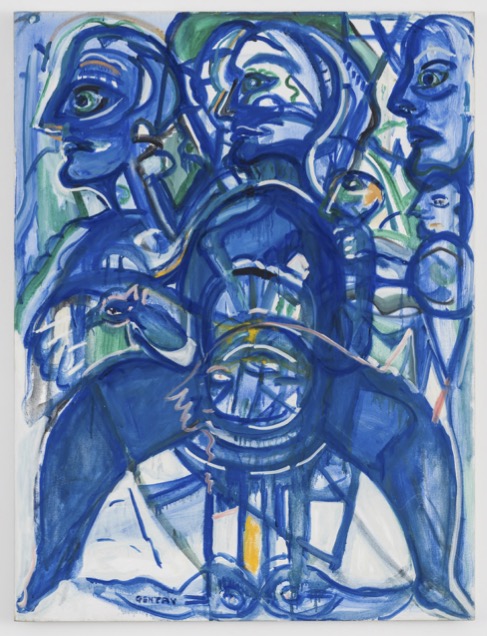 Herbert Gentry, “On The Way,” 1984, oil on linen canvas, 48 x 36 inches, courtesy of Ryan Lee Gallery.
Herbert Gentry, “On The Way,” 1984, oil on linen canvas, 48 x 36 inches, courtesy of Ryan Lee Gallery.
 Herbert Gentry, “Untitled Green Face,” 1987, watercolor on paper, 23 1/2 x 18 inches, courtesy of Ryan Lee Gallery.
Herbert Gentry, “Untitled Green Face,” 1987, watercolor on paper, 23 1/2 x 18 inches, courtesy of Ryan Lee Gallery.






